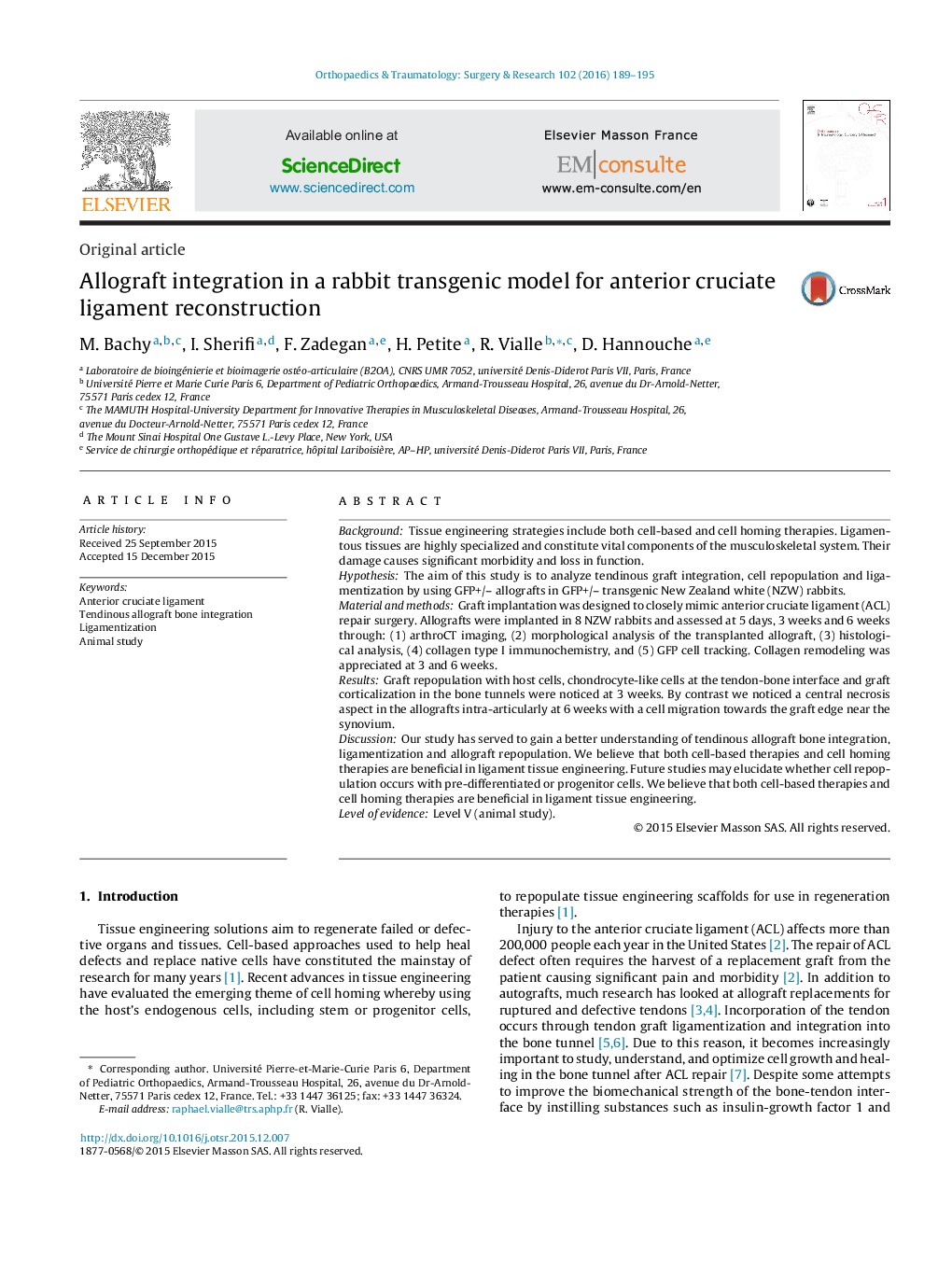| Article ID | Journal | Published Year | Pages | File Type |
|---|---|---|---|---|
| 4080823 | Orthopaedics & Traumatology: Surgery & Research | 2016 | 7 Pages |
BackgroundTissue engineering strategies include both cell-based and cell homing therapies. Ligamentous tissues are highly specialized and constitute vital components of the musculoskeletal system. Their damage causes significant morbidity and loss in function.HypothesisThe aim of this study is to analyze tendinous graft integration, cell repopulation and ligamentization by using GFP+/– allografts in GFP+/– transgenic New Zealand white (NZW) rabbits.Material and methodsGraft implantation was designed to closely mimic anterior cruciate ligament (ACL) repair surgery. Allografts were implanted in 8 NZW rabbits and assessed at 5 days, 3 weeks and 6 weeks through: (1) arthroCT imaging, (2) morphological analysis of the transplanted allograft, (3) histological analysis, (4) collagen type I immunochemistry, and (5) GFP cell tracking. Collagen remodeling was appreciated at 3 and 6 weeks.ResultsGraft repopulation with host cells, chondrocyte-like cells at the tendon-bone interface and graft corticalization in the bone tunnels were noticed at 3 weeks. By contrast we noticed a central necrosis aspect in the allografts intra-articularly at 6 weeks with a cell migration towards the graft edge near the synovium.DiscussionOur study has served to gain a better understanding of tendinous allograft bone integration, ligamentization and allograft repopulation. We believe that both cell-based therapies and cell homing therapies are beneficial in ligament tissue engineering. Future studies may elucidate whether cell repopulation occurs with pre-differentiated or progenitor cells. We believe that both cell-based therapies and cell homing therapies are beneficial in ligament tissue engineering.Level of evidenceLevel V (animal study).
